10 of the best Christmas markets in the world
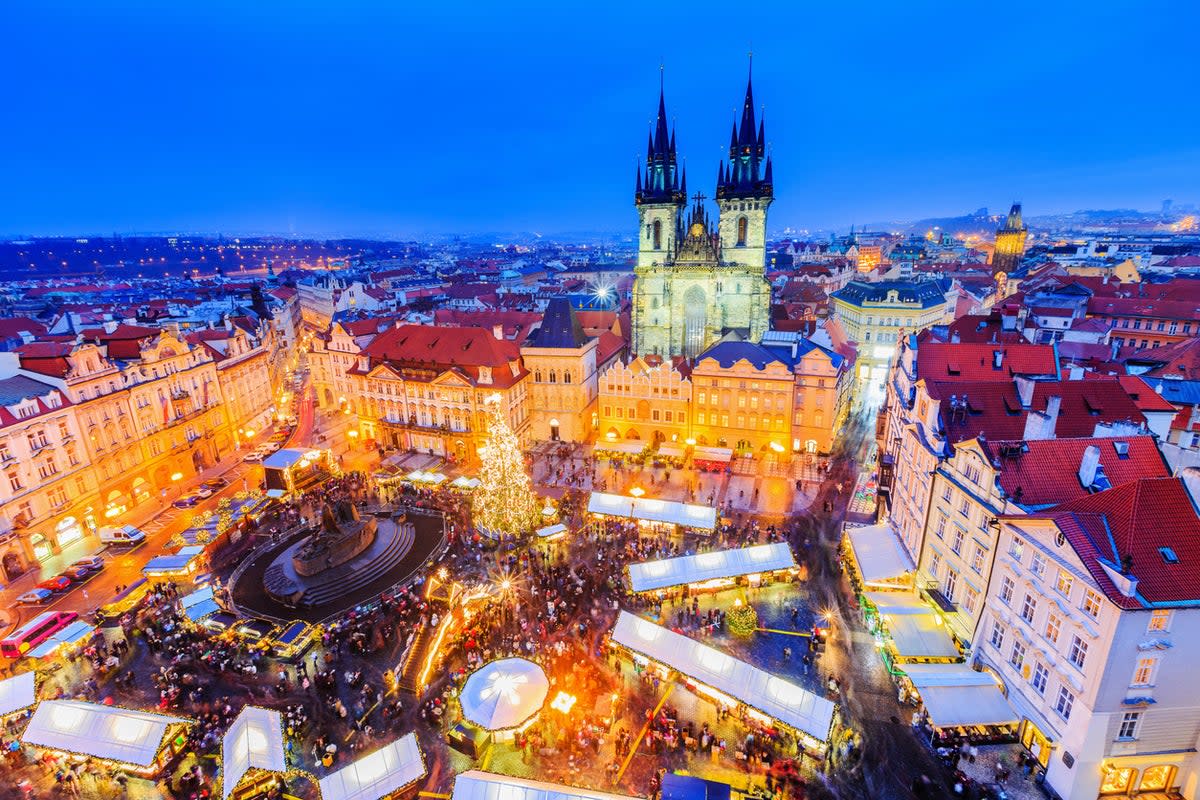
The festive period is the perfect antidote to the temperature dropping and nights drawing in as autumn turns to winter. What could be cosier, after all, than streets strewn with twinkling lights and glittering decorations?
Preparations start long before the 25 December; the first shops will start doing Christmas deals and selling gifts after Halloween, but you really know Christmas is around the corner when the markets start popping up.
Christmas markets, whether traditional or more modern, are often the defining feature of December in many cities. From Strasbourg to Chicago, the weekends leading up to the big day are dominated by visits to markets and winter villages, tucked up in cosy drinking spots after strolls around log cabins and chalet-style stalls to grab those last-minute presents, and trying to keep warm with some hearty German cuisine or gluhwein.
Whether you’re gift-hunting, day-drinking, going on a wander with the family or simply looking to get in the festive spirit, markets are an often care-free, enjoyable festive experience, and with so much variety across Europe and the rest of the world, a trip to a market abroad is the perfect pre-Christmas getaway. Read on for a selection of the best.
Cologne, Germany
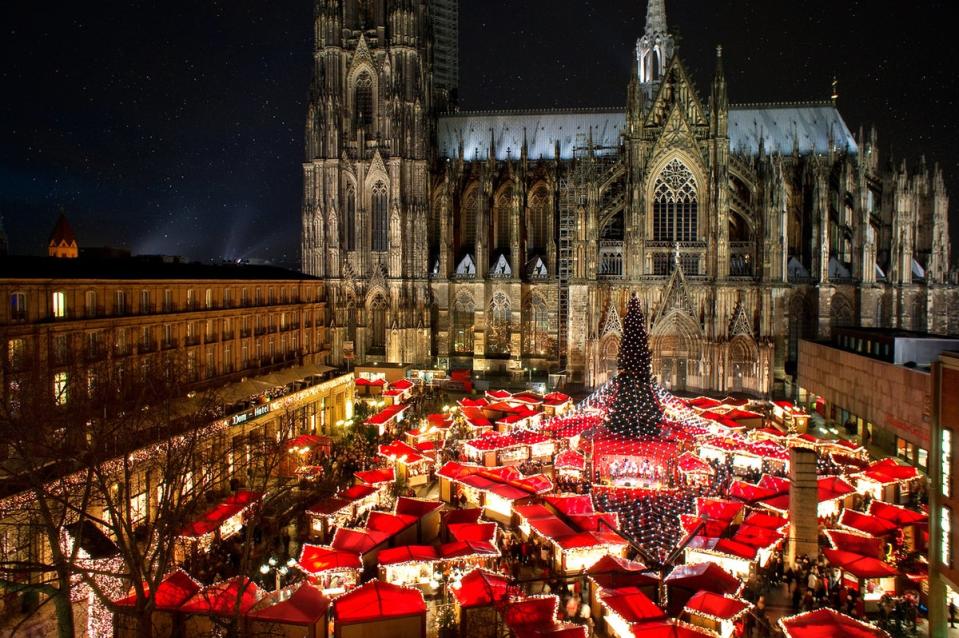
One of the most well-known markets in Germany, Cologne’s Kolner Dom sits in the shadow of the imposing, Unesco-listed Cathedral. The heart of Cologne’s most picturesque market is a giant Christmas tree surrounded by dozens of mini chalets, while the stage is the site of over a hundred performances during the festive season.
There are six other markets in the city, the largest of which is the Henzels Winter Fairytale in the old town. With a more romantic feel than the touristy Kolner Dom, it has an ice rink and larger chalets that serve as drinking holes in between browsing the various handicrafts and gifts.
The best food market – for all sorts of traditional German cuisine and Christmas treats – is at Neumarket, while families will appreciate the child-friendly workshops at the Village of St Nicholas in the aptly named Rudolfplatz.
Read more on travel inspiration:
Vienna, Austria
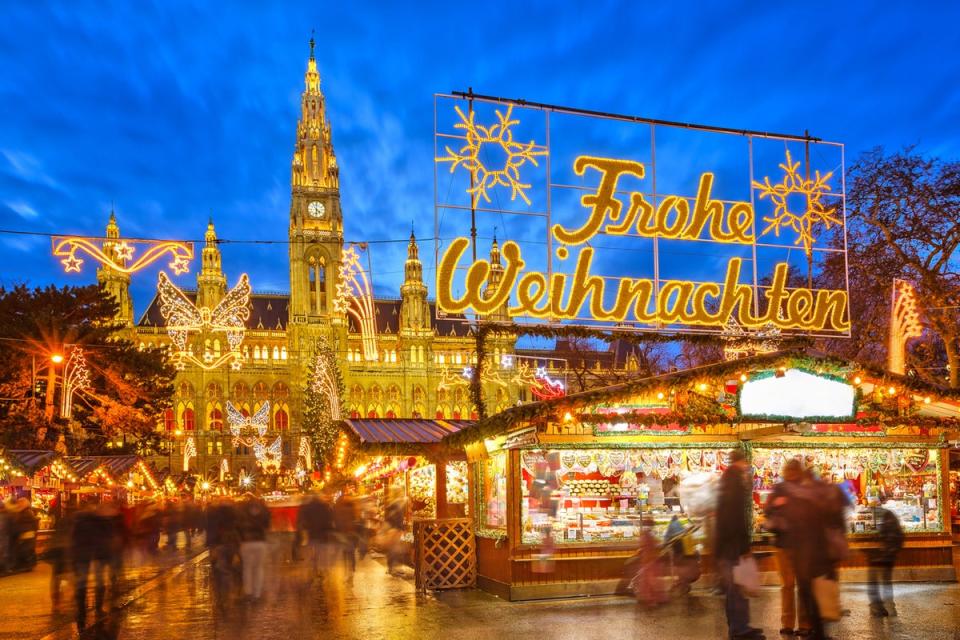
Vienna’s Christmas markets trace their roots back to the 13th century, and today they are among the most famed in Europe. Prime among them is the Magic of Advent Market at Rathausplatz, in front of the city hall (this is sometimes known as the Viennese Dream market). With over 145 stalls creating a network of alleys and festoon lights giving a charming night-time feel, this is the perfect place to sip a mulled wine (known locally as gluhwein), though if you’ve brought the kids along, there’s a special children’s area where they can learn to make cookies and candles.
Vienna is not short on impressive backdrops for its markets, and one such setting is the Belvedere Palace, a complex of two Baroque palaces with vast gardens. The market here has a more manageable 40 stalls, and the wider lanes make it easier to browse the selection of decorations, potential gifts – think candles, handcrafted trinkets or blankets – and Austrian culinary delights.
The market at Maria-Theresien-Platz has a pleasant backdrop too, and sells similar goods – the main draw here is that the market becomes a New Year Market once Christmas has come and gone, so those visiting for longer can enjoy markets long after Chritmas. For something a little more tranquil and traditional, try the markets at Spittelberg and the Schonbrunn Palace.
Strasbourg, France
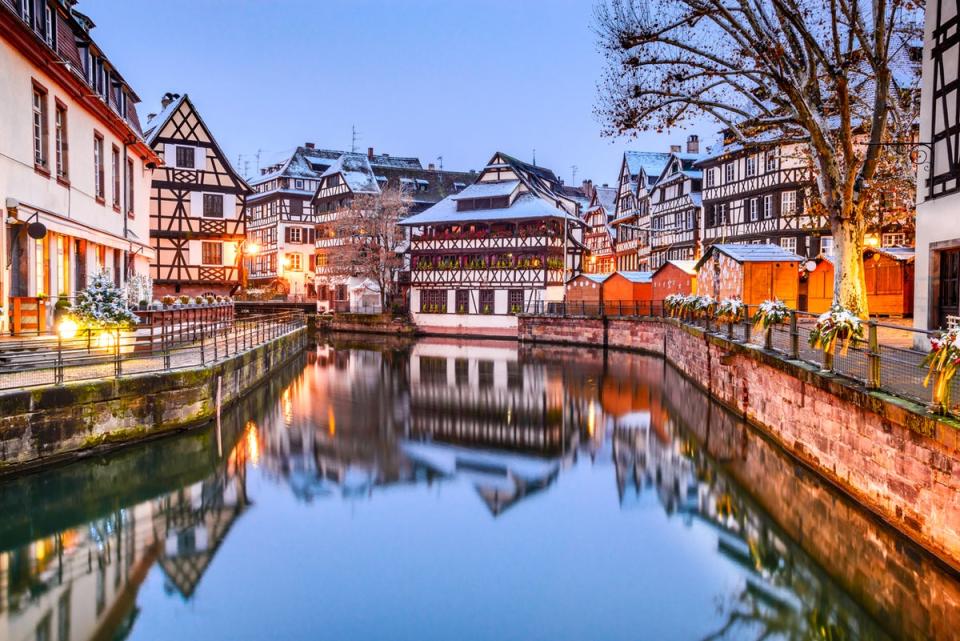
This picture-perfect northern French city is the ideal setting for a Christmas market that seems straight out of a movie. The market stalls fit seamlessly between the timber-framed buildings, and in some areas it feels like you’re transported back centuries.
In fact, Strasbourg’s oldest market dates back to 1570. Found around Place de la Catedrale and Place Broglie, it is the top choice for both food and gifts, with traditional German market foods such as gingerbread, the production of which Strasbourg has become famed for, sold alongside French dishes like crepes.
Strasbourg’s other markets are among the most characterful on the continent, with less of a focus on tourism and more on sustainability and local produce. At Place des Meuniers there is a market focused solely on small producers from Alsace – with products including local crafts – while at Grimmeisen the stalls specialise in recycled and fairtrade products, with the stalls constructed from repurposed shipping containers.
New York City, USA
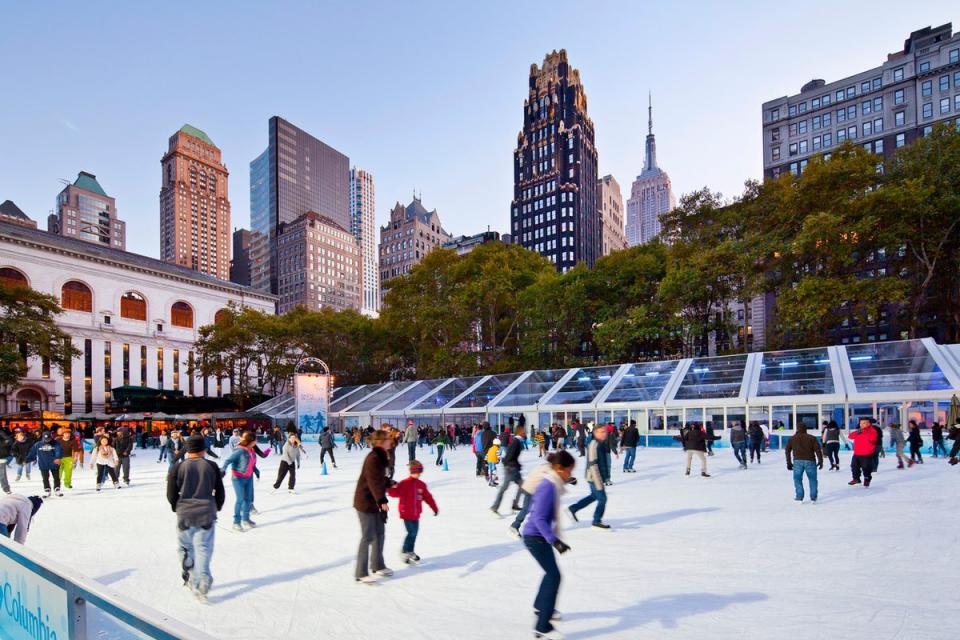
America’s quintessential Christmas destination, serving as the backdrop to Christmas films including Elf,Home Alone 2 and Miracle on 34th Street, was always going to have some of the country’s best markets. The city lends itself to an especially ‘Christmassy’ Christmas – from the flurries of snow to the sparkles of the skyscrapers – and its markets add to the festive feeling.
Several of the New York’s markets are located in the vicinity of its main landmarks. The Grand Central Terminal is one such location, where a large indoor market offers visitors an enormous range of gifts ranging from clothing and jewellery to toys and decorations. Bryant Park is another one, overlooked by the Empire State Building, where wooden stalls are replaced by little glass boutiques that sit around an ice rink.
For something a little more ‘traditional’, head to Union Square or Columbus Circle. These are where wooden huts and twinkling lights line the squares and the smell of mulled wine and bratwurst fills the air, and with over 300 stalls between them you’ll likely be able to find that one elusive present, whether it’s jewellery from an independent designer or a piece from a local artist.
Prague, Czech Republic

The Czech capital is an especially romantic city for experiencing Christmas markets. Other than the odd drizzling of snow, Prague is the polar opposite of New York; the Big Apple’s modernity, crowdedness and vastness contrasted with medieval and gothic buildings, quaint streets and squares and the city’s signature landmark, the Charles Bridge, where a series of low lights helps visitors traverse during foggy, snowy evenings.
These squares and buildings play host to atmospheric markets between November and the end of December, with a Czech spin on the usual German delights (think traditional pastries, gingerbread and dishes such as roast pork, though mulled wine and roasted chestnuts are especially popular here too).
The market on the cobbled streets of the Old Town Square is the largest in Prague, with dozens of stalls lining the plaza next to the city’s Astronomical Clock and Tyn Church. In between the stalls, you’ll find nativity scenes and theatrical or musical performances, while many will climb the small observation bridge for a photo of the giant tree and surrounding buildings, especially as the sun sets.
Nearby Wenceslas Square is full of similar stalls and is the best for trying out local and regional cuisine, while the area around Republic Square sells more local crafts, from artistic prints of the city to pashmina scarves.
Nuremberg, Germany
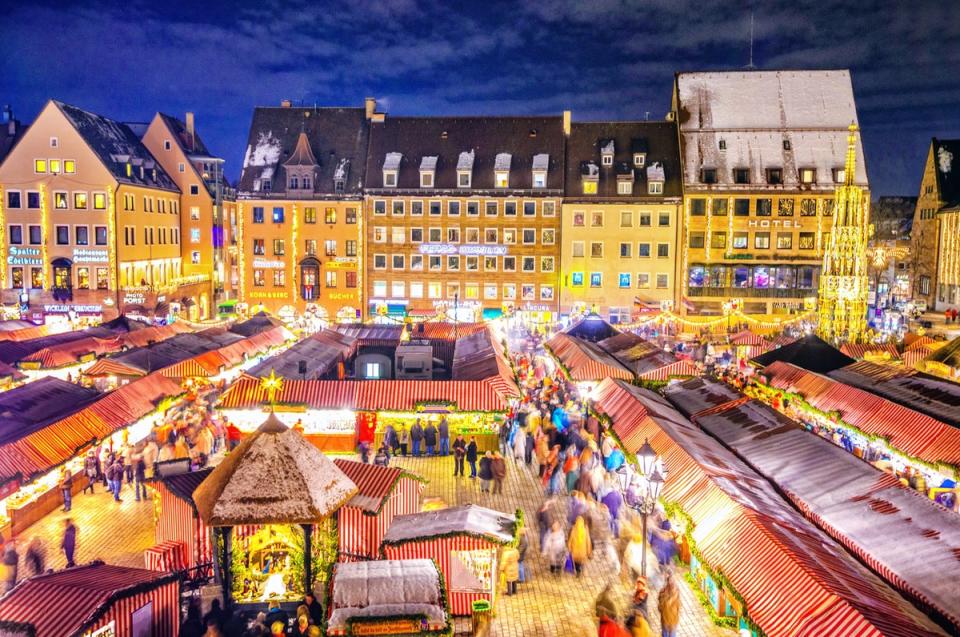
It was always going to be difficult to whittle down the list of German markets, and though Frankfurt and Berlin get special mention, Nuremberg makes this list based on its Christkindelsmarkt, one of the most famous Christmas markets on the planet.
Known as “the little city of wood and cloth”, it features row after row of mini stalls with a focus on traditional wares and food, plus plenty of workshops where visitors can make their own gifts. It takes place in the city’s main square, the Hauptmarkt, in the shadow of a magnificent 14th-century church.
Not far north lies the Sister Cities market, which sells traditional items from places that are Nuremberg’s sister cities – these include Nice, Antalya, Atlanta and Krakow. There are around 20 different stalls, some of which are operated by charities related to that particular city.
And just three minutes away from the Hauptmarkt sits the Children’s Market (known as the Kinderweihnacht), which offers plenty of activities – including decorating cakes and making candles – as well as fairground rides including a mini ferris wheel, a carousel and a steam train.
Toronto, Canada
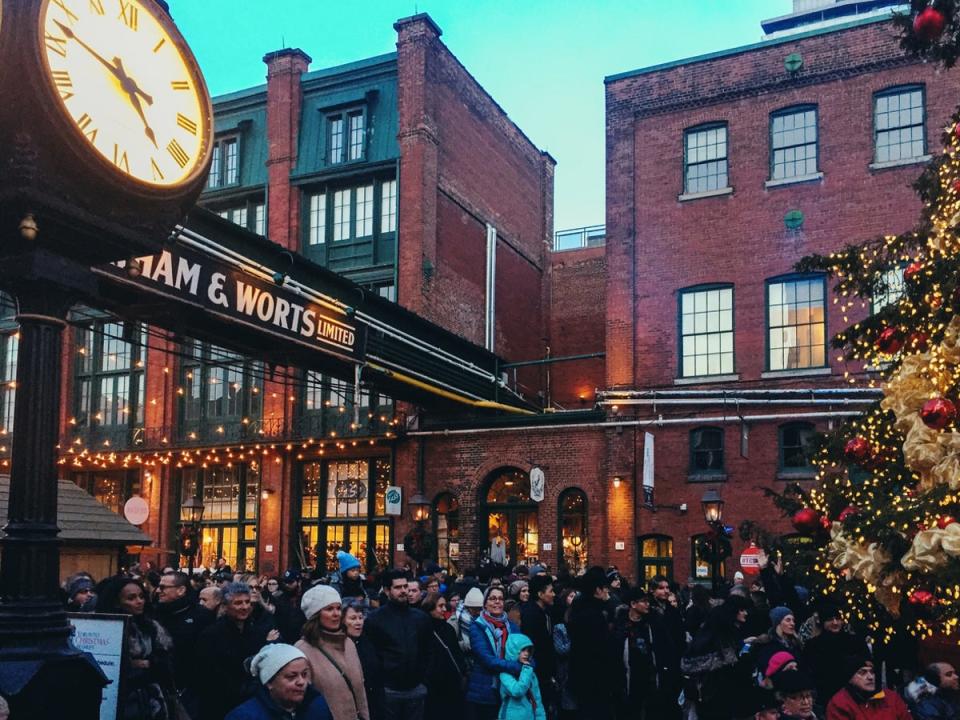
Several markets in and around Toronto have closed in recent years, leaving one main area that is decidedly different to your normal Christmas market (at least from a European perspective).
Taking place in the city’s Distillery District, the Distillery Winter Village is a series of stalls and decorations set up in among a district of 19th-century brick warehouse buildings. Formerly known as the Toronto Christmas Market, it remains the city’s premiere festive destination.
From mid-November until 31 December, the area is transformed into its own mini wonderland with dozens of festoon lights, a large beer garden, and a 15-metre tree present alongside the usual brick-and-mortar stores. Stalls here sell a variety of products ranging from foods – which cater to a wider variety of dietary requirements – to the usual market fare such as handicrafts, decorations, trinkets and gourmet treats.
Chicago, USA
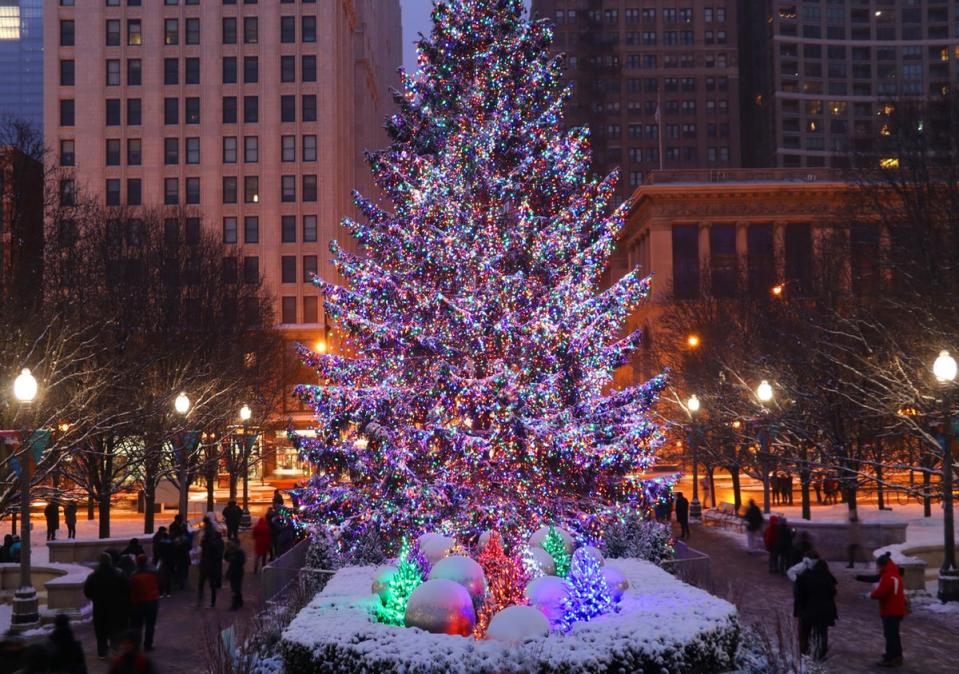
This is another North American city that only has few markets, but it goes big on the one it does have. Chicago’s Christkindlmarket is inspired by Nuremberg’s market of the same name, with locations in Daley Plaza and Wrigleyville (which lies just outside of the city).
Both have incorporated many of the traditional German touches, from German food to wooden stalls, and even though the surrounding skyscrapers will remind you you’re in the US, this is as close to a European market experience as you’re likely to get this side of the Atlantic.
A popular place to spend a weekend evening drinking and tucking into strudels and bratwurst, the market has vendors from several different countries around Europe, with plenty of stalls selling traditional gifts – from cuckoo clocks to figurines – and others offering clothing or jewellery.
Copenhagen, Denmark
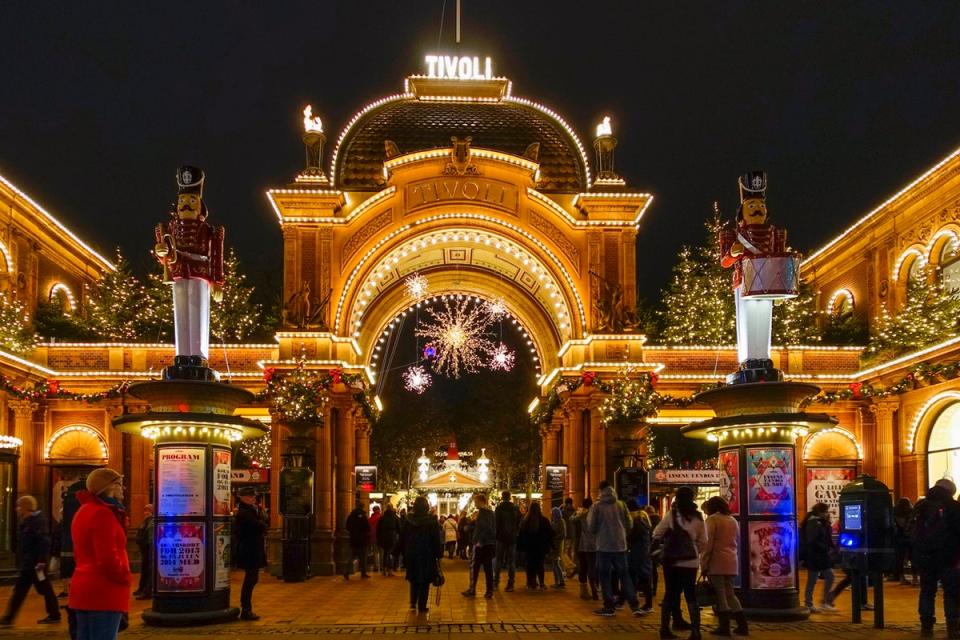
Another European city that hosts several markets from November onwards, Copenhagen is among the best cities for experiencing continental festive cheer. A charming city at any time of year, it comes alive with the special Christmas additions.
There’s nowhere better to start than the Tivoli Gardens, perhaps the city’s most renowned attraction and the site of a large market that combines Christmas magic with the rides of an iconic theme park. Decked head-to-toe in lights and baubles, the park welcomes 60 stalls alongside the usual rides and added attractions such as illumination shows (note that a ticket is required to enter the park, which costs around £17 for an adult).
A similarly idyllic market takes place at Nyhavn, Copenhagen’s most atmospheric district, where colourful houses sit by the waterfront and a small number of stalls line the cobblestone streets. You’ll definitely visit this area anyway – it is a good choice for a quick drink or a (sometimes quite expensive) meal – so take a walk around to see a range of Danish crafts.
Nearby, the city centre market at Hojbro Square is perhaps the city’s most traditional, with the usual log cabins selling mulled wine, German sausage and stocking-fillers against the backdrop of over 20,000 lights (kids can get a picture with Santa here too). The city’s zoo also becomes a ‘winter wonderland’, where adults can roam among the stalls while children marvel at reindeer, pandas and penguins.
San Francisco, USA
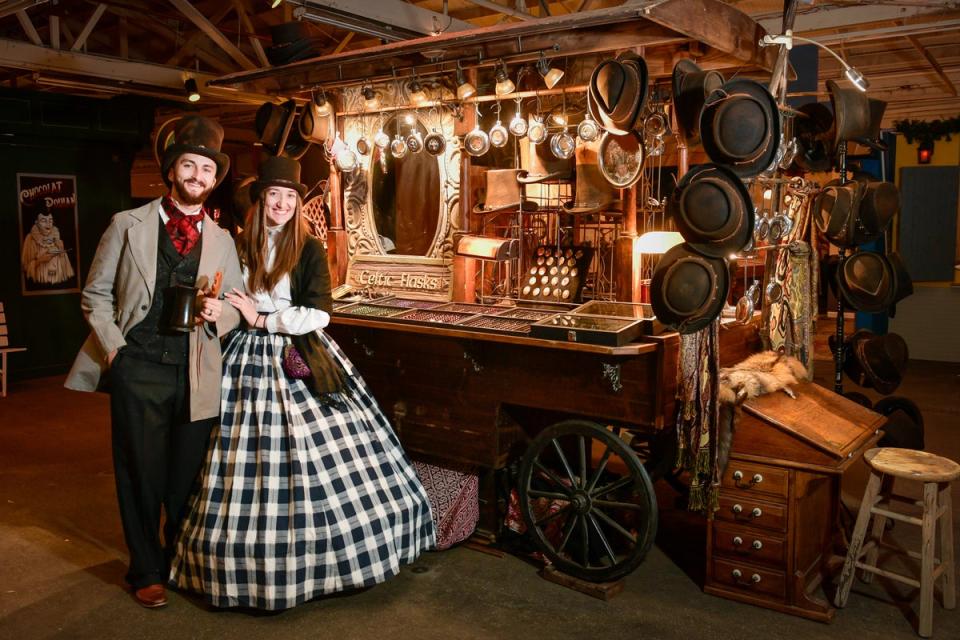
If you’ve ever wondered what life was like in 19th-century England, head to San Francisco’s Great Dickens Christmas Fair. Every Saturday and Sunday until 18 December, you can get a taste of the UK over 5,000 miles (and 200 years) away.
One of the more unusual Christmas markets, it offers an array of modern British specialties – think fish and chips, bangers and mash and imperial pints – as well as a slew of traditional touches, from Victorian-style pubs and servings of afternoon tea to 19th-century ‘celebrities’ and Dickensian performers.
It’s almost more of a festive party than a traditional Christmas market, though visitors will find Santa Claus making an appearance and over 100 stalls selling everything from jewellery to books and handicrafts.
Read our reviews of the best hotels in Europe


